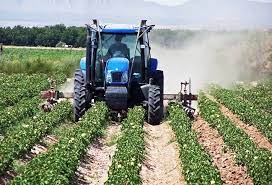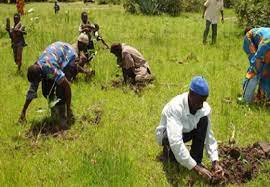By John Oba
with agency report
Food and Agricultural Organization (FAO) and the World Trade Organization (WTO) has agreed to strengthen cooperation to promote international food trade and safety in ways that improve peoples’ nutrition and allow small-scale producers to have better access to international agriculture markets.
“We look forward to ensuring fair trade of agricultural and food products through this stronger (FAO-WTO) cooperation,” FAO Director-General José Graziano da Silva said in remarks made to his WTO counterpart, Roberto Azevêdo during an event at the UN food agency’s headquarters.
“On the one hand trade is likely to play an increasing role in meeting the growing demand from food-deficit countries. On the other hand, greater trade openness may undermine the capacity of local people to produce their own food,” the FAO Director-General added.
Graziano da Silva warned that failure to reach a balanced solution on issues relating to production and trade of agricultural products could derail the international community’s recently agreed sustainable development goal to eradicate world hunger.
For his part Azevêdo stressed that at the WTO, “we seek to ensure that the global trading system works for all, that it is fair and balanced,” in a way “which supports growth and development and allows people to access the goods and services that they need” including food.
“When I visit developing countries, especially in Africa…business people tell me about the difficulties they face in meeting the required standards,” the WTO Director-General said, adding that it is essential to provide capacity building for producers in developing countries, an area of work where his Organization and FAO are seeking to deepen their collaboration.
Azevêdo referred to the 10th WTO Ministerial Conference in Nairobi on 15-18 December 2015, where the role of agriculture – especially in development and in improving the lives of people in least developed countries – is high on the agenda.
Issues for discussion include addressing trade restrictions that bear on imports, such as the lowering of tariffs, the need to minimize domestic agricultural subsidies and, the “distortions these programs produce,” Azevêdo said, as well as the need to eliminate export subsidies.
The WTO Director-General expressed hope that some agreement would be reached in Nairobi on the issue of export subsidies. This would mark “an extremely significant breakthrough,” and would be especially important for developing and least developed countries.
Graziano da Silva and Azevêdo both underscored the increase in cooperation between FAO and the WTO. This includes deepening their collaboration on trade and food safety, including a joint publication in 2016 which would deal with sanitary and phyto-sanitary (SPS) measures that curb the spread of plant and animal diseases during the transport for trade of agricultural products.
“Our [WTO] agreement on the Application of Sanitary and Phytosanitary Measures names the FAO/WHO Codex Alimentarius and the FAO International Plant Protection Convention as standard-setting organizations in these matters” underlined Azevêdo.
Other areas where the two organizations are seeking to reinforce their joint efforts include the Standards and Trade Development Facility (STDF), capacity development initiatives to assist countries in the implementation of the Codex Alimentarius or “Food Code” which develops harmonized international food standards that protect consumer health and promote fair practices in food trade, and country level assistance to facilitate trade in safe and nutritious food.
Don’t farm naked
Soil is more than the dirt beneath our feet. Soil is rich in biodiversity. According to Kathy Merrifield, a nematologist from Oregon State University, “one teaspoon can hold up to one billion bacteria, several yards of fungal filaments, several thousand protozoa, and scores of nematodes.” Unfortunately, soil is eroding at unprecedented rates. Professor John Crawford of the University of Sydney warns that “a rough calculation of current rates of soil degradation suggests we have about 60 years of topsoil left.”
But cover crops can help protect soil and prevent degradation.
According to the U.N. Food and Agriculture Organization (FAO) “cover crops improve the stability of the conservation agriculture system.” Cover crops are one of the most effective ways to make staple crops and soil their most productive while also enriching land for future use and providing biodiversity for the greater ecosystem.
The FAO also reminds us that with the Green Revolution of the 1960s, “the production model focused initially on the introduction of improved, higher-yielding varieties of wheat, rice, and maize. Fertilizers replaced soil quality management, while herbicides provided an alternative to crop rotations as a means of controlling weeds.
” But today farmers are leading a resurgence of interest in cover crops and the concept of the sustainable agroecosystem.
Practical Farmers of Iowa is an organization of farmers promoting farmer-led agriculture beneficial for land and people. They advise farmers, “Don’t farm naked” to highlight the benefits of cover crops. Practical Farmers of Iowa uses a Cooperator’s Program of on-farm research conducted by farmers to find effective solutions to contemporary agricultural challenges, and “transition to more sustainable and economically profitable systems.
” The Cover Crop Variety Trial 2014-2015 experiments with and analyses a wide variety of cover crops in Iowa production systems.
Cover crops such as rye, alfalfa, and clovers are needed to protect soil from excessive rain and sun, provide organic structure, distribute nutrients, and limit harmful pests and weeds. They also provide economic benefits through reduced fertilizer needs, fewer problems with pests and weeds, and often, larger yields.
Cover crops are classified into legumes and non-legumes with each grouping having its particular applications and benefits.
Legumes like alfalfa, clovers, cowpeas, medics, soybeans, sunn hemp, velvet bean, and woolypod vetch are part of the pea family. Often referred to as green manure, leguminous cover crops can be tilled under and incorporated into the soil where their decomposition provides nitrogen, phosphorus, and other nutrients to subsequent crops. Legumes also help prevent erosion, add organic matter to soil, and attract beneficial microorganisms and insects.
Cereal grains, grasses, brassicas, and mustards make up the non-legume category.
The high carbon content of grasses and grains like barley, oats, rye, sorghum-sudangrass, wheat, spelt, and triticale leads to a slower breakdown of their organic materials.
This biomass lasts longer and is effective at limiting weeds, especially when left on ground as mulch. Their low nitrogen content relative to legumes also makes them effective nitrogen scavengers, important for balancing soil that has become oversaturated with nitrogen. This leads to a higher all around nutrient extraction with less nutrients left over for the next crop. Buckwheat is particularly effective at drawing out phosphorus and calcium from the soil. Like legumes and most cover crops, grasses and cereals also help limit soil erosion.
Brassicas and mustards like arugula, kale, rapeseed, and turnips, while not legumes, are in between legumes and grasses regarding nitrogen content and rate of breakdown.
They are effective pest controllers due to strong chemical compounds released during their decomposition process that are toxic to pests and weeds, while reducing the prevalence of disease in subsequent crops. Brassicas and mustards tolerate cold and drought well, have expansive roots, and serve as useful feed for grazing animals.
Following on traditional farming practices around the world, the Land Institute focuses on crops which are perennial, meaning they live all year, and are harvested multiple times, instead of just once before dying. The Land Institute believes in agriculture in harmony with nature.
The complexity that perennials and cover crops bring to soil supports biodiversity and improves soil health. “This web of checks and balances, predator and prey that make up complex ecosystems make it difficult for any single species to dominate. Instead, a self-regulating equilibrium sets in.”
According to Sustainable Agriculture Research & Education (SARE), planting cover crops in between staple crops has a variety of economic and environmental benefits. SARE has released a report describing positive results from a survey of over 750 U.S. farmers on cover cropping practices.
Cover crop mixtures often involve combinations of legumes that are powerful nitrogen contributors with cereals and grains that are effective at drawing excessive nutrients like nitrogen out of the soil. These mixtures regulate the nitrogen content of soil causing grasses to thrive if soil is nitrogen rich, and legumes to flourish if the soil lacks nitrogen. Sorghum-sudangrass is effective at invigorating unproductive soil from the biomass it leaves behind.
Soil is a rich living system of organisms. Crops with different root lengths make soil richer by distributing water and nutrients across a greater area. Oats, radishes, rye, brassicas, and mustards have long root systems, while clovers and peas have shorter dimensions. Together they can help maintain a rich growth environment. Roland Bunch, a sustainable agriculture expert with Groundswell International, points out that intercropped cover crops can save farmers work, since they “shade out” weeds.



